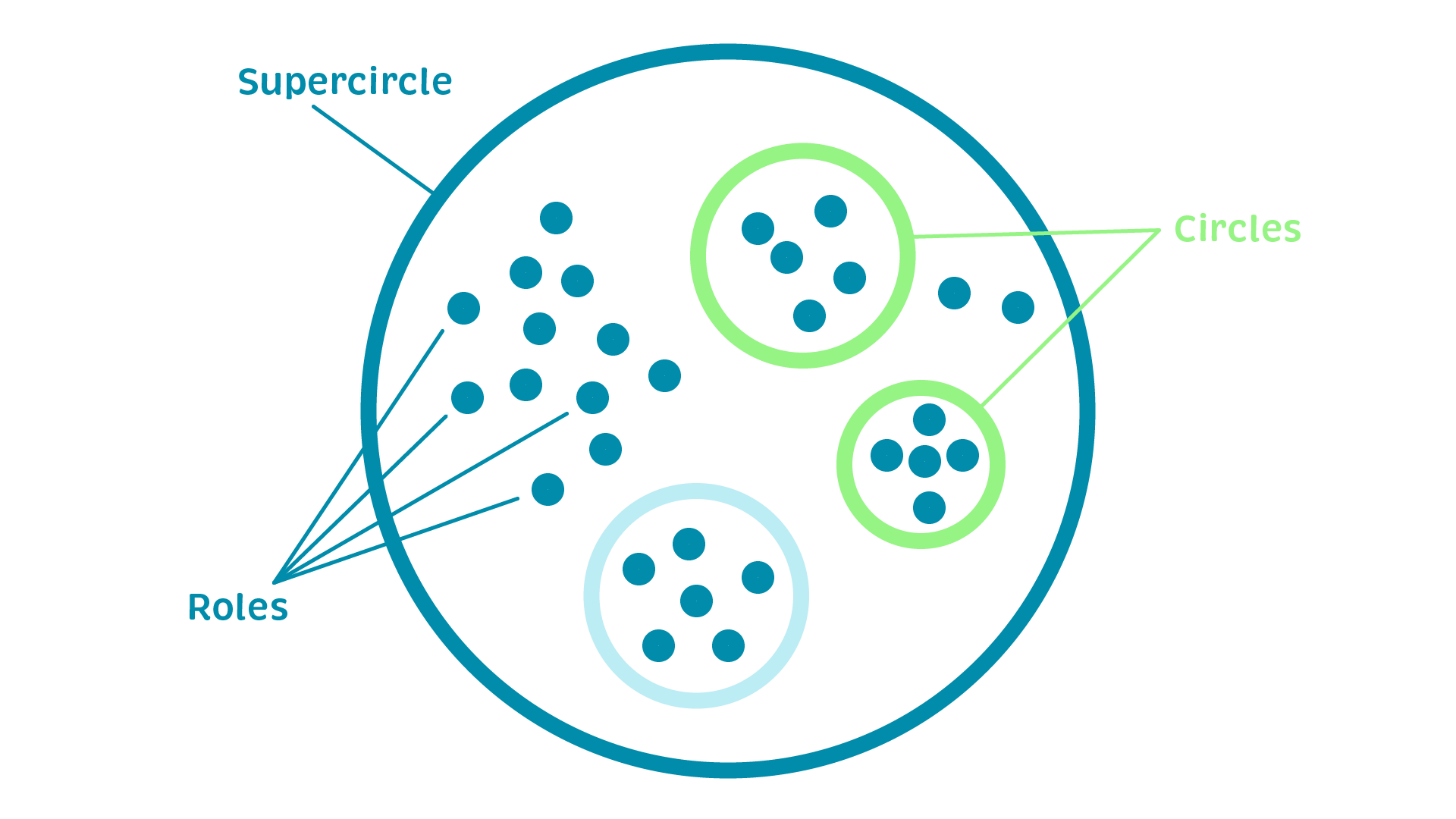The way we work has changed radically in recent decades. Terms such as agility and self-organization are no longer foreign words, but central pillars of modern working methods. Many companies, managers and teams already rely on these concepts, but what do they really mean? A closer look reveals that these ideas are often misunderstood or only partially implemented. Agility means not only the ability to adapt quickly, but also a culture of continuous reflection and improvement. Self-organization, on the other hand, requires more than just flat hierarchies - it requires a high degree of personal responsibility and a clear distribution of roles.
But what comes next? What does the next stage look like? The answer may lie in a concept called holacracy - the next evolutionary stage of agile work methods that shows us how we might organize ourselves in the future.
At first glance, Holacracy sounds like a mix of science fiction and management jargon. But it is a serious idea that is already being implemented in some companies and has the potential to fundamentally change the way we work.
What is Holacracy?
Holacracy is more than just another buzzword in the innovation jungle. It is an operating system for organizations that replaces traditional hierarchical structures with a flexible, self-organized network. In a holacracy, there are no fixed leadership positions in the traditional sense. Instead, responsibilities are assigned to different roles that can change dynamically as needed. These roles are well defined and give employees the freedom to organize their tasks and make decisions independently, without having to wait for instructions from above. Anchoring self-organization and agility is therefore a prerequisite.
The holocratic organization:

What is special about Holacracy is the structure of the circles and the way decisions are made. Instead of working in rigid departments, employees are organized into circles. Each circle is responsible for a specific area or process in the company and operates largely autonomously. There are defined roles within these circles, but these can be flexibly adapted as requirements change.

In Holacracy, decisions are not dictated from the top down. Instead, there are regular decision-making meetings where members of a circle come together to discuss and adjust the distribution of roles and responsibilities. Everyone in the circle has the opportunity to make suggestions and express concerns. These meetings promote transparency and ownership, and they ensure that the structure of the organization is constantly adapting to current needs.
Why Holacracy matters now
Recent years have shown that companies that can adapt quickly to change have a clear advantage. Holacracy could be the answer to making organizations more flexible and resilient. By breaking down rigid hierarchies and introducing self-organized teams, Holacracy fosters creativity and innovation. Employees feel more involved, which increases motivation and ultimately the quality of work. Finally, it increases speed and responsiveness and improves efficiency - not insignificant in view of the shortage of skilled workers.
Is Holacracy realistic?
But is Holacracy really a realistic vision for most companies? To be honest, no, at least not in the near future. Transitioning to a Holacratic system requires far-reaching changes in corporate culture and structure that cannot be achieved overnight. This change can be an immense challenge, especially for large, established companies. The more complex the interrelationships and dependencies within the organization, the more the trend toward individual decision makers and stable management committees. There are already pioneers such as Zappos, which has implemented Holacracy, but such success stories are still the exception rather than the rule. Many companies will take some time to embrace this radical change, if they ever do.
What organizations can learn from Holacracy
While Holacracy in its pure form is not currently feasible for many companies, there are valuable principles that can be adopted:
- Make roles more flexible: Companies can soften rigid job descriptions and allow employees to dynamically shape their roles based on current projects and needs.
- Encourage empowerment: Introducing more empowerment can help employees become more involved in decisions and identify with the company's goals. A key to this is to reduce complexity while increasing transparency from current managers/decision makers.
- Servant leadership: The leader as coach, rather than decision maker, promotes autonomy and personal responsibility.
- Transparency in decision making: Regular meetings to review and adjust roles and responsibilities can help keep structures transparent and respond more quickly to change.
Holacracy may be an ambitious goal for the future, but the principles behind it can be implemented today. Companies that are willing to embrace these ideas will be more flexible, innovative, and competitive in the long run. The journey to a fully Holacratic organization may be a long one, but the first steps can be taken today.
With us as your consulting partner, you can successfully take those first steps.
From agile core training to leadership development and agile organizational development, we can support you in your transformation to an agile and sustainable work environment. We work with you to develop solutions that are tailored to your organization and prepare your teams for the challenges of the modern workplace.


